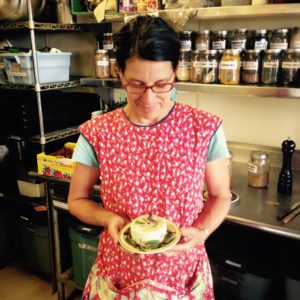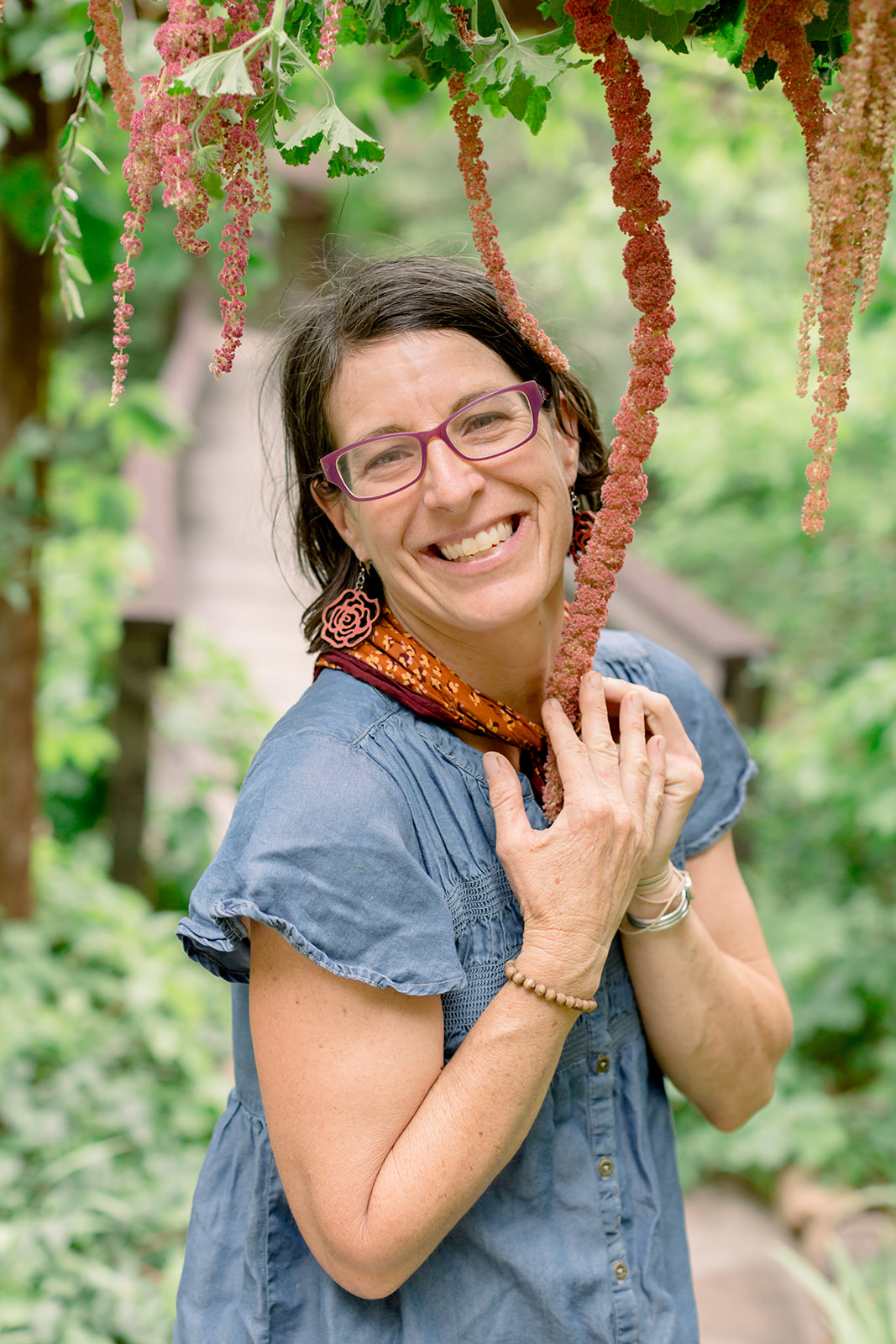
Two weeks ago when I visited my friend Tony Norris in the intensive care unit at Flagstaff Medical Center he was on life support. His large and loving family gathered around him shell-shocked while machines kept him alive, and I tried to imagine how I could help. In the intensive care unit you can’t even bring fresh flowers. Besides trying to sing him back from beyond, the only kind of life support system I know how to activate is to cook a homemade meal. During moments when I feel most helpless, rolling up my sleeves to make something always provides some kind of comfort.
I went back to my house and grabbed the last Cinderella pumpkin from the summer’s harvest on the U.C. Santa Cruz Farm that had been decorating a shelf in my living room. Also called “Rouge vif d’Etampes,” after a little town in France, they are a unique heirloom variety, which was popular in French markets in the 1800s. There is something magical about them (besides the fact that the seeds are still in circulation), owing to the fact that they bear a strong resemblance to the one Cinderella’s fairy godmother transformed into a carriage to take her to the ball. This pumpkin was also supposedly cultivated by the Pilgrims and served at the second Thanksgiving dinner. I was hoarding this pumpkin because it held the essence of my farm experience. All the memories of joy and celebration around the food we grew, cooked and enjoyed together were locked up in the tasty, orange flesh. Winter squash is a hearty, meaty vegetable, packed with nutrients and calories. To me it was yet another wonder of farming—plant a plain, flat white seed into moist ground and soon sprawling vines with vivacious tendrils are creeping everywhere, giving life to giant globes that can then be stored indefinitely through the winter to provide nourishing meals.
When I left the farm in mid-October my Subaru was jammed to the hilt with my belongings and the trappings of my summer: seeds, dried flowers, pillow cases and burlap bags filled with dried corn, herbs and beans, flower essences and herbal tinctures. Due to lack of space I could only fit a 35-pound blue Hubbard squash, and had to leave behind samples of the other winter squash and pumpkins we grew. To my delight, when a fellow farm apprentice, Chelsea, stopped through for a visit on her way from California back to her homeland in Tennessee, she brought me a box of produce from the farm, and this exquisite pumpkin we grew.
 As I set to work breaking down Cinderella’s carriage so it would fit in my oven and become soup for the Norris clan, my mind drifted back to the Farm Center kitchen. Each month this summer we were required to team with another apprentice and prepare all three meals for our 50-member community improvised with the veggies that were in season, plucked fresh from the ground minutes before. Those were the most exhausting days of work on the farm. You were on your feet all day stirring enormous pots of simmering stews, chopping mountains of kale, mandolin slicing cucumbers, and roasting enough chilies to feed hungry farmers without meat or cheese. But they were also some of the most intimate; as I began to realize that the kitchen is a place where you connect to the roots of your food traditions, whether they are associated with neuroses, joys or sorrows.
As I set to work breaking down Cinderella’s carriage so it would fit in my oven and become soup for the Norris clan, my mind drifted back to the Farm Center kitchen. Each month this summer we were required to team with another apprentice and prepare all three meals for our 50-member community improvised with the veggies that were in season, plucked fresh from the ground minutes before. Those were the most exhausting days of work on the farm. You were on your feet all day stirring enormous pots of simmering stews, chopping mountains of kale, mandolin slicing cucumbers, and roasting enough chilies to feed hungry farmers without meat or cheese. But they were also some of the most intimate; as I began to realize that the kitchen is a place where you connect to the roots of your food traditions, whether they are associated with neuroses, joys or sorrows.
In my family home cooking is equated with love. To this day, my mom cooks her special homecoming chicken-broccoli casserole when we return, a tradition that began when we left for college. Over the years, the meals I have cooked and shared with my sisters have been like therapy sessions. We wept tears of joy and sorrow into our piecrusts, applesauce and soups as a way to reconnect and heal each other after time apart.
I know that farm fresh food is a staple in the Norris household. Sue’s Doney Park garden is a beautiful, productive oasis that feeds their family and the community. The day I delivered the pumpkin soup there was a palpable feeling of relief as Tony had regained consciousness. Each day he improves, and is now able to enjoy the food we make him. I know the love infused in it will heal him.
The food we grew at the farm was some of the best I have ever tasted and I believe it came from being intimate with the effort and delight of taking a seed to its full potential and then transforming that energy into nourishment for a community of farmers who appreciated it wholeheartedly. In my experience, cooking with community and feeding the people we love is the medicine that we need the most.
To get on board Tony’s meal train and help support he and his family during his recovery with home-cooked meals and live music, please visit www.mealtrain.com/trains/39yly8.
Kate Watters is a plant enthusiast, writer, artist and musician. She has been a resident of Flagstaff for almost 20 years, and recently took a hiatus to Santa Cruz, Calif., where she was farm apprentice at the Center for Agroecology and Sustainable Food Systems. She is now armed with hand pruners and a harvest knife and intends to apply her newfound knowledge and passion to growing all kinds of plants in northern Arizona.

